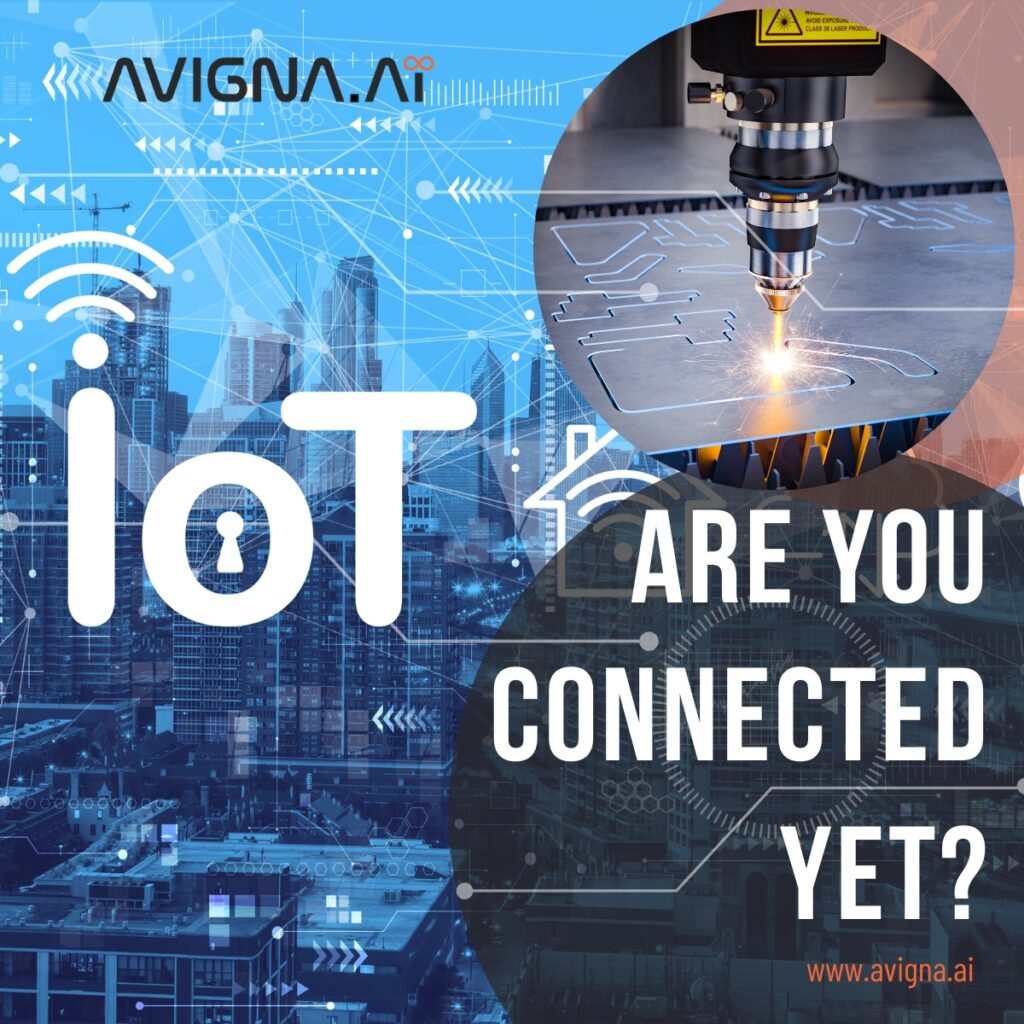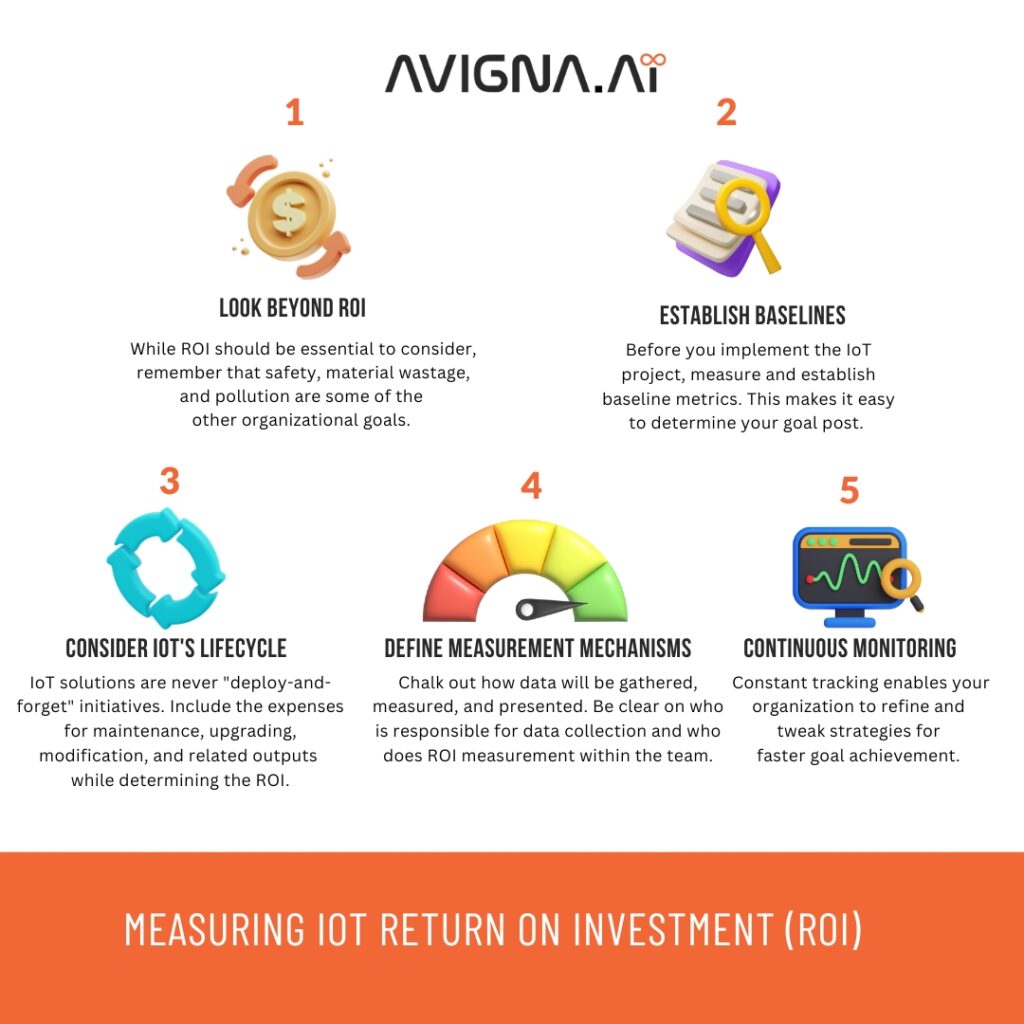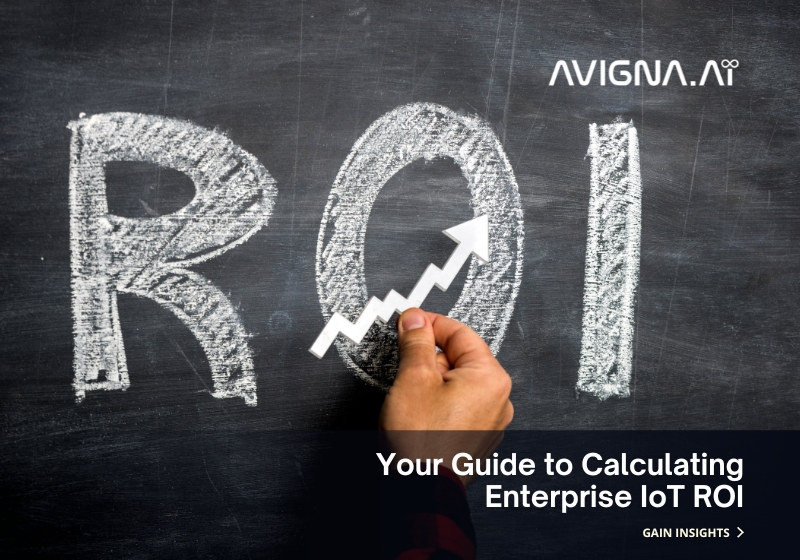Your Guide to Calculating Enterprise IoT ROI
In the early days of the IoT, people thought and imagined just how many millions or even billions of connected “things” there would be, and it was truly remarkable. However, these predictions were often exaggerated, vague, and contradictory.
However, for most industrial firms, the notion of interlinking billions of devices with the internet is not so significant. While this is the case, telecom companies, wireless carriers, and semiconductor manufacturers might see growth opportunities within different industries, but not for a company trying to leverage the IoT for its own business and its customers’ businesses.
The fascination around billions of connected devices is wearing off now. Instead, the emphasis is now moving from constructing information pipes and links to the actual value application of such information in business organizations. Let’s take a look at these points that will help you calculate enterprise IoT ROI.
Be clear about your destination
Influential leaders in IoT (Internet of Things) know where they are going and how they can use IoT for business purposes. This vision may be about improving customer service, product reinvention, service-based offerings, or operations excellence.
Nevertheless, it is essential to recognize that the actualization of this dream is a long process. Leaders collect the insights with their teams in a series of successive projects that ultimately produce significant accomplishments.
Shane O’Neill, the enterprise infrastructure architect and IoT lead at Rolls-Royce, offers this valuable advice. However, Rolls-Royce, famous for the transformation of its IoT-driven services business, stresses the significance of concentrating on the crux of the matter.
Taking this advice into account is particularly important as undertaking digital transformation, especially in the IoT space, creates difficulties. McKinsey has identified the initial 15 or so IoT use cases as presenting limited returns rather than creating a foundation for companies to go to large scale in their IoT endeavors. The gradual approach might later help IoT leaders save costs or generate new income streams, often going beyond 15 percent.
Calculate the total cost of ownership
To achieve success in your IoT project, the total cost of ownership that covers both hardware and software expenses should be calculated. So, before hitting the IoT ROI Calculator, what costs should you consider? In-person pricing assessment or remote IoT pricing.
Here are vital factors to consider:
1. Upfront & Recurring Costs:
So, how to calculate ROI for IoT? The costs of initially deploying an ongoing IoT solution can vary depending on the scope and duration of a project. Some of these components are the purchasing of equipment and IoT devices. Most asset monitoring systems also incur monthly or yearly subscriptions or licensing fees, but these are often workable on a longer-term basis.
2. Training Costs:
Usability varies with IoT-connected devices. Some equipment is intuitive and only requires basic knowledge for new users; however, other equipment may require significant investment in their ability to operate. Make sure you set apart resources to be used in training.
3. Maintenance Costs:
Although most IoT systems involve little maintenance or updates, it is necessary to budget for such ongoing expenses and predict related costs. Not paying close attention to care could cause trouble later on.
How to calculate ROI for IoT? Taking those aspects into account and the calculation of your total cost of ownership (TCO) should provide you with a good overview of the finances of your IoT project. Therefore, you will get informed opinions and know how to spend and predict what is going to happen next.

Possess An Innovative Perspective on the IoT ROI
Every company should look for ways to work better, be competitive, and improve their earnings. This is seen through investments in new technology, which they use as a vehicle for growth, and also by discoveries on how they can develop.
Things to consider when the company is looking into technological investments:
1. The Money Spent: This includes buying hardware and software, training employees, and ensuring all is set.
2. Not Knowing the Future: As with all other technological transforms, the company should not assume instant benefits for adopting new technology. Does it threaten the organization’s current business?
However, traditional methods for investment, such as the net present value (NPV) and discounted cash flow (DCF), do not apply to new technologies such as IoT.
Such approaches usually render the initial costs feel overwhelming and do not offer enough value for future commitments. Moreover, uncertainty at the beginning can signify more excellent value to come.
Therefore, if a company decides to invest in something new, such as the Industrial IoT, it is better to approach this matter from another side.
One possible method is known as “Real Options.” Essentially, this is somewhat similar to choosing a financial call option that allows a decision to decide not to follow through with the transaction in the future. By investing in real possibilities, you are investing in creating value for either the technology itself or its components in the future.
For companies, this notion wouldn’t seem that odd. It also spends money on innovation and research to develop new products. They can view these investments as long-term building initiatives using the actual options framework.
To figure out the value of these future chances, you have to think about a few things:
- Getting Ahead in the Market: Can the new products or services increase competitiveness in the company? Will they be able to prevent other companies from gaining a foothold in the industry?
- Using a Strong Foundation: It is common for companies to develop upon existing foundations. They should get something good and then go big and take fewer risks.
- Being Innovative: The ability of companies to change and develop is something that must become known to them. New technology is more beneficial for an innovative company.
- Learning: Some companies that learn much and apply it can have faster growth with lesser risk. This increases the chances of securing good returns from the investment.
As such, anytime a company wants to embark on IoT or whatever else, they must contemplate all these facets. Money is not the only thing here; it’s about what it generates tomorrow.
Learn more: Risk mitigation in IoT
Best Practices for Measuring ROI for IoT Deployments
1. Look Beyond ROI Alone:
While Industrial IoT ROI should be essential to consider, it shouldn’t be the only metric to gauge the success of IoT projects. Safety, material wastage, and pollution are some of the other organizational goals. IoT solutions can assist your corporate objectives. So, make sure to use the right Enterprise IoT ROI Calculator.
2. Establish Baselines Before Implementation:
Before you implement the IoT project, measure and establish baseline metrics. This makes it easy for you to determine your goal post. Baselines also allow leaders to influence the improvement of such metrics.
3. Define Measurement Mechanisms Pre-Deployment:
Make sure you have proper ways of collecting data before the deployment of the IoT project. Describe how data will be gathered, measured, and presented. Be clear on who is responsible for data collection and who does ROI measurement within the team.
4. Continuous Monitoring is Key:
During assessments, measure beyond the IoT ROI. Ensure that the stakeholders and managers constantly have access to the Industrial IoT ROI metrics. A constant inspection enables your organization to correct and tweak strategies for better goal achievement.
5. Consider IoT’s Lifecycle:
Understand that IoT solutions are not “deploy-and-forget” initiatives. To be effective, they need continuous revision and improvement. Include the expenses for maintenance, upgrading, modification, and outputs they produce while determining the ROI IoT.
Hence, organizations should follow these best practices to understand fully the generated value from their IoT implementations. A holistic perspective takes into account financial and non-financial benefits, leading to better decisions and effective IoT initiatives.

Conclusion
Finally, calculating Enterprise IoT ROI is no simple matter, and it extends beyond mere financial measures. It encompasses the detailed assessment of both numerical and non-numerical calculations. Organizations can realize the complete potential of IoT deployment by considering gains beyond monetary value in safety, efficiency, sustainability, and customer satisfaction.
Accurate ROI IoT assessment requires setting up baselines, defining a way for measurement, and constant monitoring. Furthermore, it is essential to bear in mind that IoT solutions need to be constantly reiterated and improved to get a realistic Industrial IoT ROI calculation. In the end, the ROI assessment should provide organizations with meaningful information that can help them make informed choices when it comes to utilizing the benefits that accrue from IoT systems.
Avigna is a leading IoT Consulting firm in India. We specialize in end-to-end consulting services in IoT providing our clients with the state-of-art, customized strategies for their IoT requirements. Reach us at queries@avigna.ai to kickstart your IoT innovation. Contact Us.



